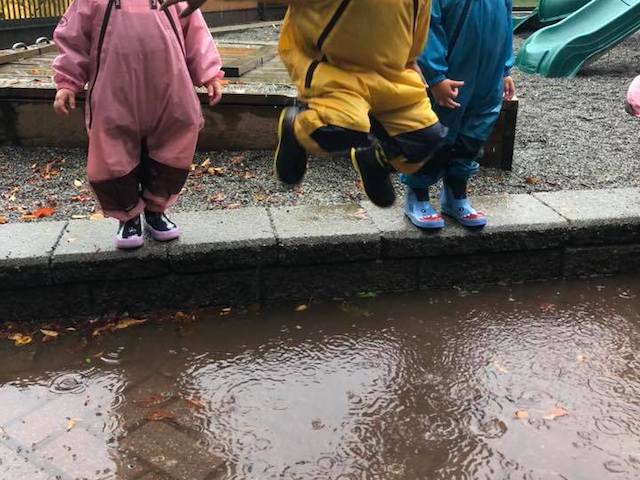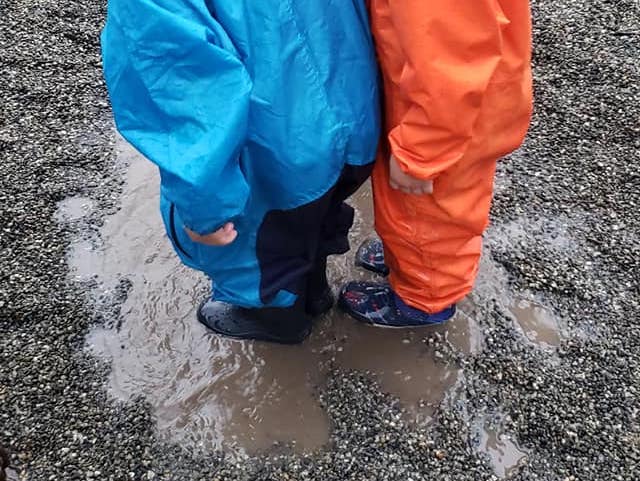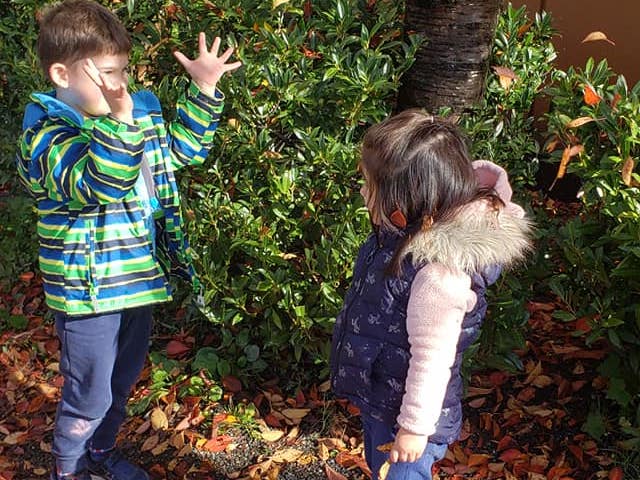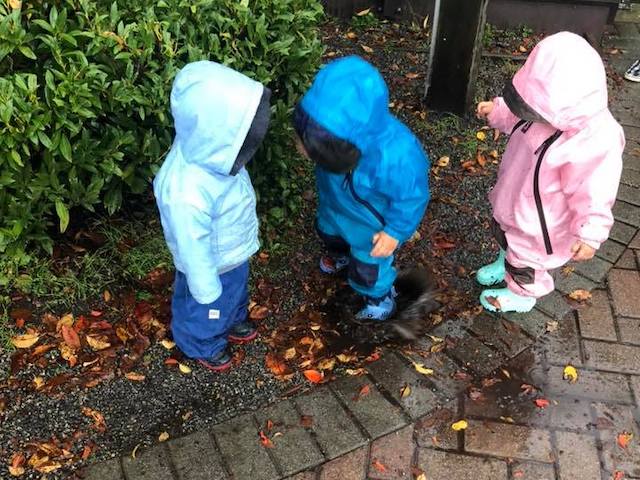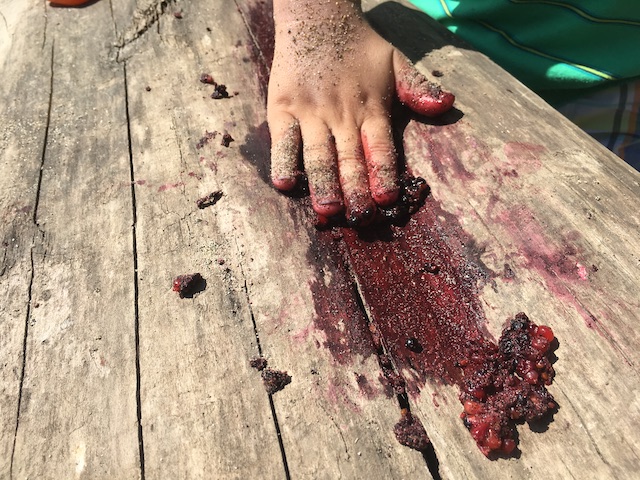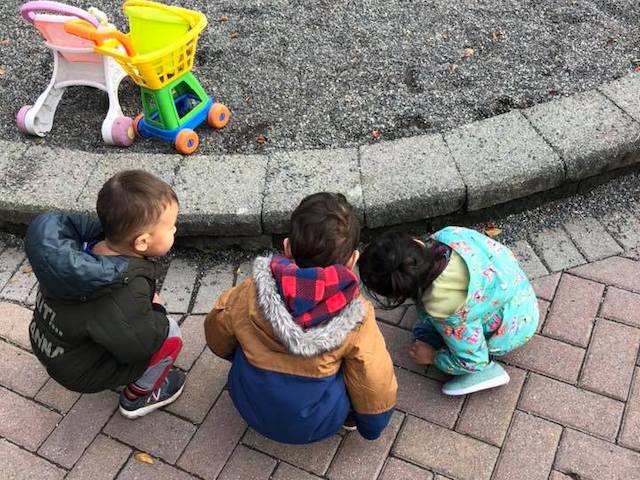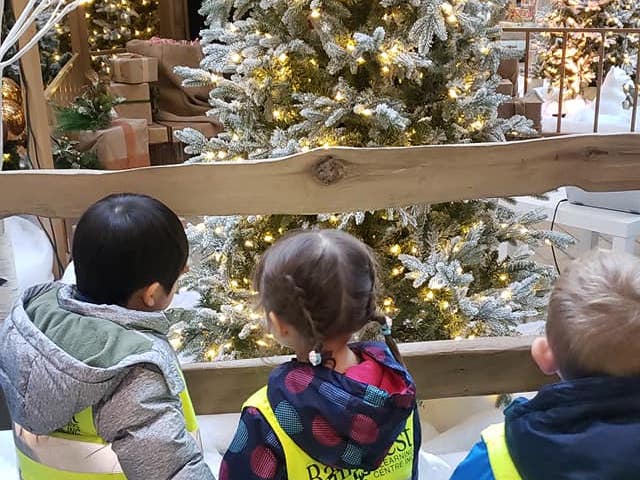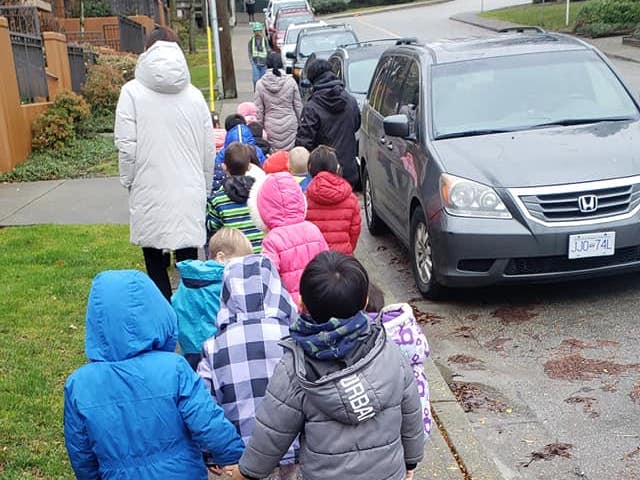
When children and their caregivers are cooped up inside, sometimes, nothing helps like going for a walk. You get fresh air, a dose of nature, and something new to focus on. But sometimes, walks – in and of themselves – can be boring. Especially if you and the kids take the same route frequently. So, in this article, we’ll give some ideas for taking purpose-driven walks with daycare kids or preschoolers. These should ‘spice up’ your routes, so you have goals and things to look forward to on your walks.
1) Go on a daycare walk to watch construction happening in your neighbourhood
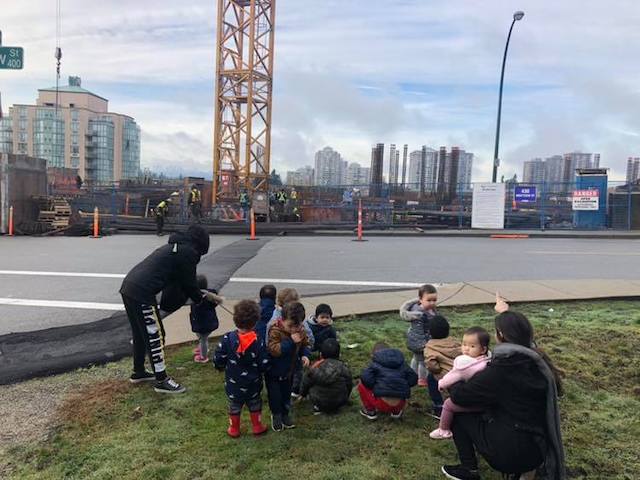
If you live in the Lower Mainland or Fraser Valley, there’s probably construction going on all around you. If your daycare or preschool is near a construction site, why not take the group out for a walk to watch the building process taking place? Obviously, you’ll want to keep a safe distance from the site, and let the workers do their job. Make sure the kids have visible, reflective safety vests on too.
Standing far enough away, daycare kids can watch cranes, hear some drilling, and maybe even see a lift pulling up heavy equipment. They can imagine where the future doors and windows will go. You can ask them what they think the piles of dirt will be for. Or what shape they think the building will turn out to be.
If you return to this spot often enough, the kids will be able to see the building site take shape, gradually over time. Maybe you can document the process with photos, which you can post on the wall.
When you return to the preschool classroom, try building projects with materials like popsicle sticks, blocks, gingerbread houses, and so on.
If you have toy tools, you can also explain what they are for, during circle time.
And maybe – just maybe – a friendly construction worker may come by to say hello!
2) Go on a walk to find puddles, and have fun in the rain
Is it raining outside? No reason to wallow in that fact. Instead, head outside and conquer those muddy puddles, just like Peppa Pig would. Like we wrote in this article, messy play can be wonderful for children.
Worried about being wet and cold? Not to worry: there are clothing options for that. Some companies make specially-designed water-proof gear for kids. Treat them like school supplies: ask that all children purchase a pair. That way, no day will be without opportunities for outdoor education.
Also, puddles are very fun to splash in! If you haven’t already, you should try it sometime!
On your walk to find puddles to jump in, ask the kids to find as many as they can. But in truth, this activity doesn’t require detailed instructions or lesson plans. Kids will find their puddles and enjoy them without your help!
3) Enjoy a nature walk with your preschool classroom, and start noticing the details
Nature is wonderful to take in from a distance. But did you know nature is full of details? Like the veins in leaves, or the grains in wood. Or the shapes of leaves, and how they make a crunching noise when dry up and you step on them. Have you ever tried ‘painting’ with squished berries? Or felt the softness of dandelion fuzz, or grass seeds? Have you looked closely inside a tree hole or node? Or felt sticky sap on its bark? Or seen ants crawling up and down, or in and out of a little hill? Have you noticed that pebbles in the shade are cold to touch, but pebbles in the sun are nice and warm?
When you go on a walk with preschoolers, make a list of things to look for, and check off items on the list as they find them. Kind of like an ‘eye spy’ game, or a road trip game. This way, the children can learn to notice the details in nature – all of which can form plenty of biology lessons when you head back into the classroom.
The other way to do this is to use teachable moments. When children notice something in nature, find the opportunity to explain how it works, and ask them more questions about it. For example, why do you think these pebbles are cold, but those ones a few feet over are warm? You can then teach them a lesson on shadows, too.
If you find a puddle, you can also test what floats and what doesn’t. Try dropping a leaf, a rock, a piece of wood or grass in the puddle. What happens?
You can also combine a journaling lesson or activity with this. For example, you can go on a photography walk, or a drawing walk with children. Ask them to draw a picture of what they see. Or take a collection of photos.
The ideas here abound. But the point is, to take your time to ‘go slow’ and appreciate all the learning opportunities that come with noticing details in nature.
See related on our blog:
- Teaching preschoolers about shadows – a great early childhood science lesson
- 4 preschool journaling experiences to try in early childhood
- 4 Top benefits of outdoor education in early childhood
- How to find and use teachable moments as an early childhood educator
- What is experiential education in early childhood, and why is it important?
4) Walk to the mall or the store with your daycare kids
We mentioned this in our article on preschool field trip ideas, but it is certainly fitting here, too. Grocery stores can bring with them number and counting lessons, buying and selling lessons, and even food and health lessons. But shopping malls can also sometimes have activities suitable for children. For example, in the Greater Vancouver area, where we are, malls have indoor playgrounds (Brentwood and Lougheed, for example). Or, they have rides for kids, like mini carousels. Metrotown, in Burnaby, offers a $1 train ride that runs most afternoons.
Also, during certain seasons, like at Christmas time, the mall will have Santa and Christmas trees or lights to look at.
Window shopping, or playing the same sort of ‘checklist game’ that we mentioned above with regards to nature, could also work. For example, “can you find a dress? What about a sign with the letter ‘S’? Do you see something hard or something soft?” and so on.
If your daycare or preschool is located near a mall, they may make a good place to get out for a bit. And, if it’s not a holiday, or there are no indoor playgrounds for physical activities, you can split up into groups and go on little treasure hunts.
Whether your mall is within walking distance or not, this may require a bit of a spending budget from the parents to pull off. Keep that in mind. You may want to start a little ‘discretionary funding’ account with the families, for these types of trips. Or, plan them in advance, and let them know what the cost will be.
5) Walk to an open space where children can run safely
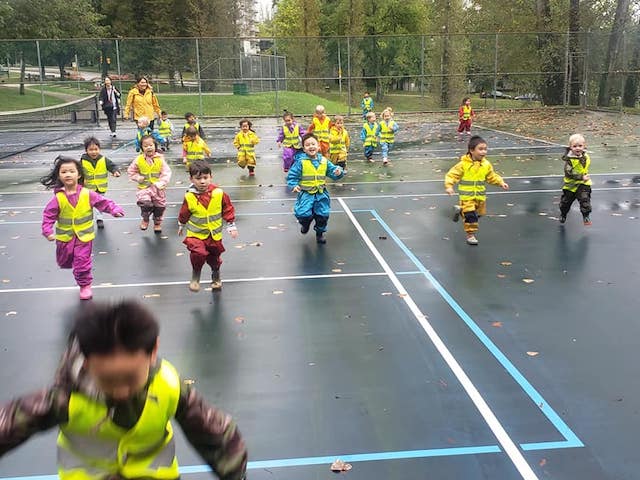
Sometimes, cooped up kids just need a way to burn off energy, and let off some steam. For this, you don’t really need a little tot-sized playground. A simple empty field, baseball diamond or tennis court will do. Just let them run! Even if it seems mundane to you, the kids often love it. If there is a hill to roll down, you get bonus points!
Walk to a nearby high school or community center’s open area for something like this. Play tag, ‘Simon Says’ or other games that involve movement, if you need to make things more interesting.
To conclude: going on walks with preschoolers doesn’t always require a playground
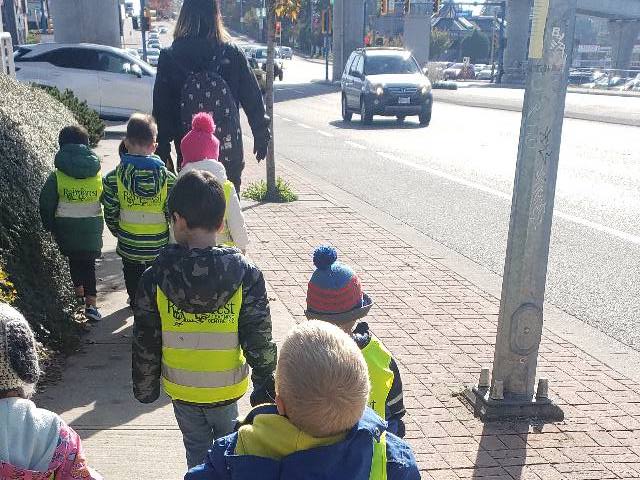
You may notice we didn’t list the most obvious ‘walk with a destination’ – the playground. Your daycare centre may already have a playground on its premises. So, it’s something the kids already have access to, and may still make them feel ‘trapped’ in their usual space. Certainly, nearby playgrounds and water parks can give some variety. But we want you to know that you can mix things up a little, and go on interesting walks with the children in your care. You can make the simple, monotonous things in life a little more exciting. It’s especially easy to do with this age group, where life is full of interesting and new findings.
See related articles on our blog:
